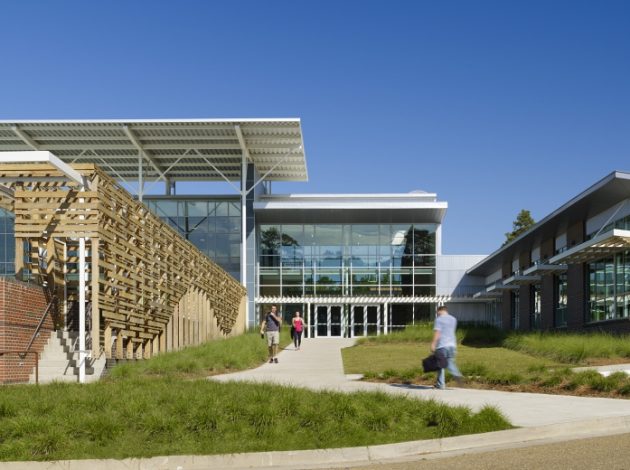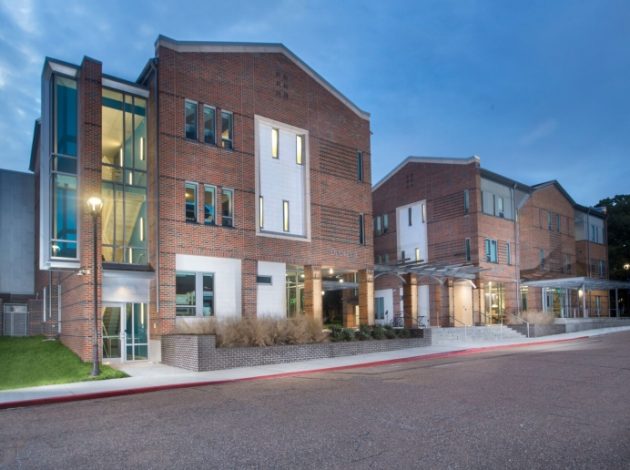“A tornado hit Tech” is a simple, even rhythmic, sentence. The reality is a disaster; through the twilight hours of late spring, fierce winds shattered glass in dorm windows and ripped apart pristine fields and facilities. Our longtime client Louisiana Tech has spent recent years planning and implementing a “21st-century campus” that would suit students for decades into the future. Improvements include new housing, recreational facilities, renovations, and a reenergized campus. Would recovery bring growth to a halt?
Governor John Bel Edwards visited the Ruston campus on March 5 to cut a ribbon, throw a baseball at the newly rebuilt J.C. Love Field (designed by Tim Brandon Architecture), and marvel at how far Tech has come in the two years since the deadly April 2019 event. He spoke to KTBS about resilience in Louisiana: “Nowhere is that better exemplified than here in Ruston.”
The governor’s commitment to Tech’s forward-thinking recovery made projects like the new baseball and softball fields possible, said Adam McGuirt, who was appointed Director of Disaster Recovery and Strategic Initiatives in the week after the tornado. McGuirt’s new role gave momentum and sharp focus to the University’s recovery response. He learned the lingo and acronyms (FEMA, GOHSEP, ORM) needed to facilitate repairs with the architects and engineers. He kept lines of communication open at all hours.
Shows of support kept spirits high. McGuirt remembers an especially quick response from Ken Tipton and Shane Higdon, of Tipton Associates, and Doug Ashe, of Ashe Broussard Weinzettle, our JV partner on Tech projects. Together, the team produced a preliminary assessment of damages to 36 buildings within 24 hours of tornado and a comprehensive assessment that formed the basis of claims to ORM and FEMA within 3 days. “When disaster hits, you figure out who your partners are and who is just a business relationship,” said McGuirt.
Another upheaval arrived the next spring, when COVID-19 shuttered campuses across the country. But Tech’s evolution continues, thanks to a coordinated effort and strong communicators like Adam McGuirt. “Working remotely during these construction projects has been a challenge,” he said. “In government you have a lot of layers of approval. When people aren’t in the office, they don’t move as quickly as you like. But we bought out the jobs ahead of time, so supply chain issues weren’t major. If you look back over April 25, 2019, here we are in early March, we have occupancy in a fully functional baseball stadium. It’s thanks to the governor, the president, on down. Every person, every layer, every level of leadership, in every agency we’ve dealt with has been tremendous in wanting to help us recover,” said McGuirt.
“What’s exciting is we continue to find ways to provide more to our students,” he added. “We look for ways to build physical infrastructure and enterprise. We’re creating an unparalleled educational experience and housing amenities that match.”


